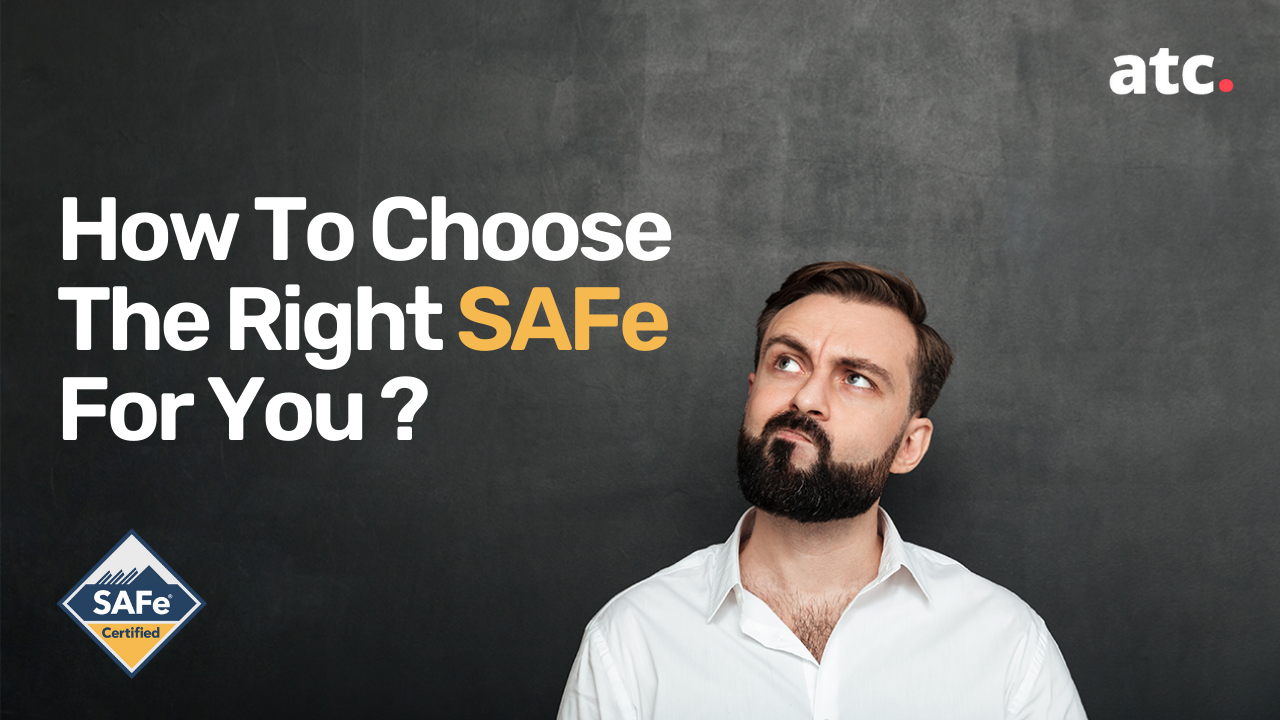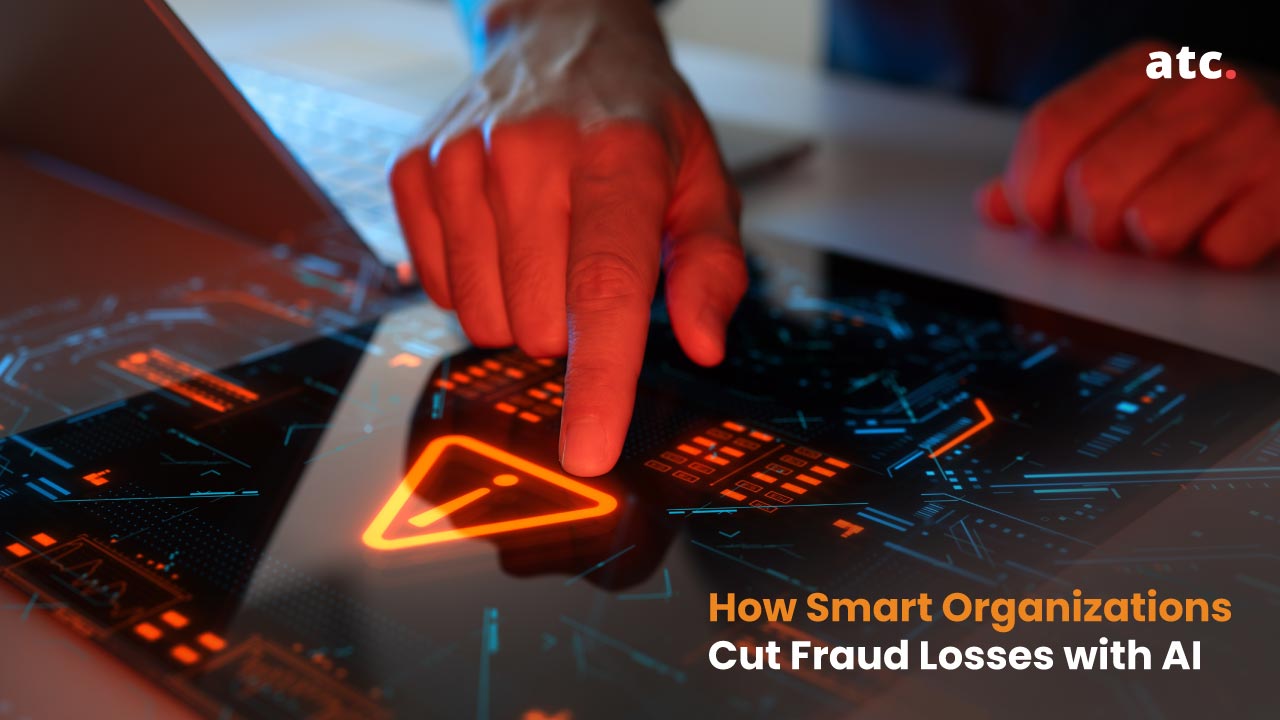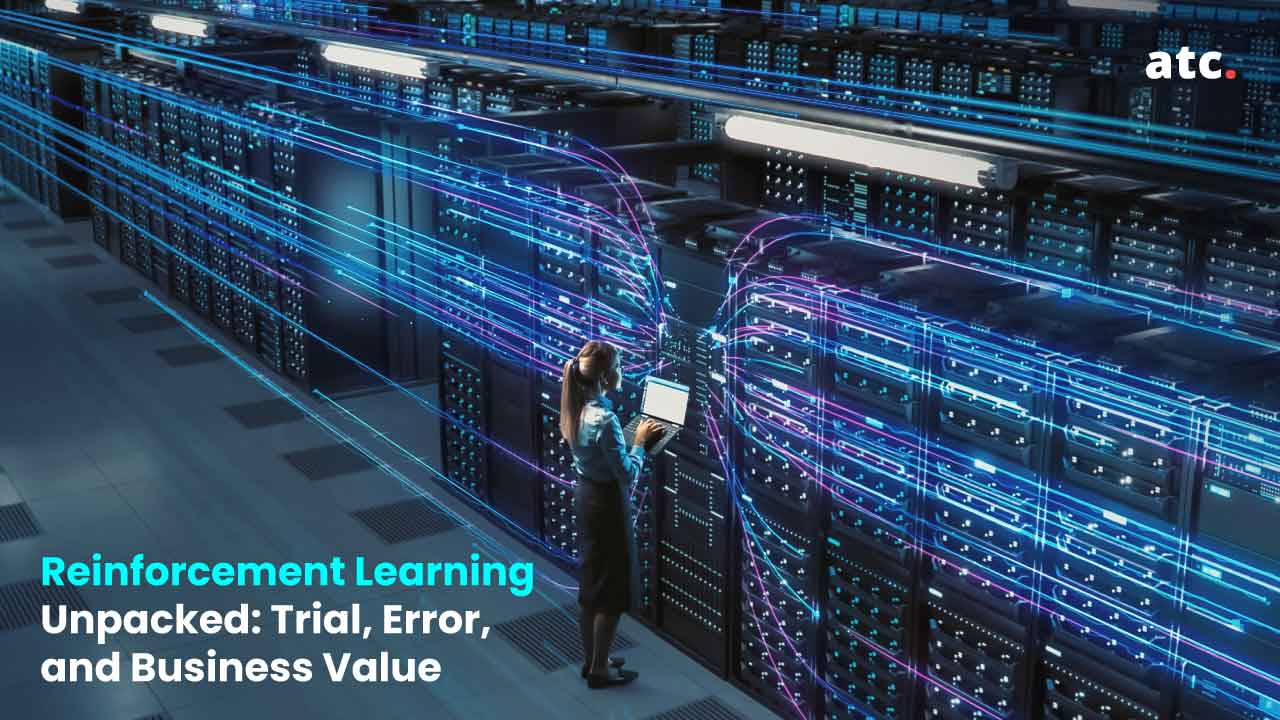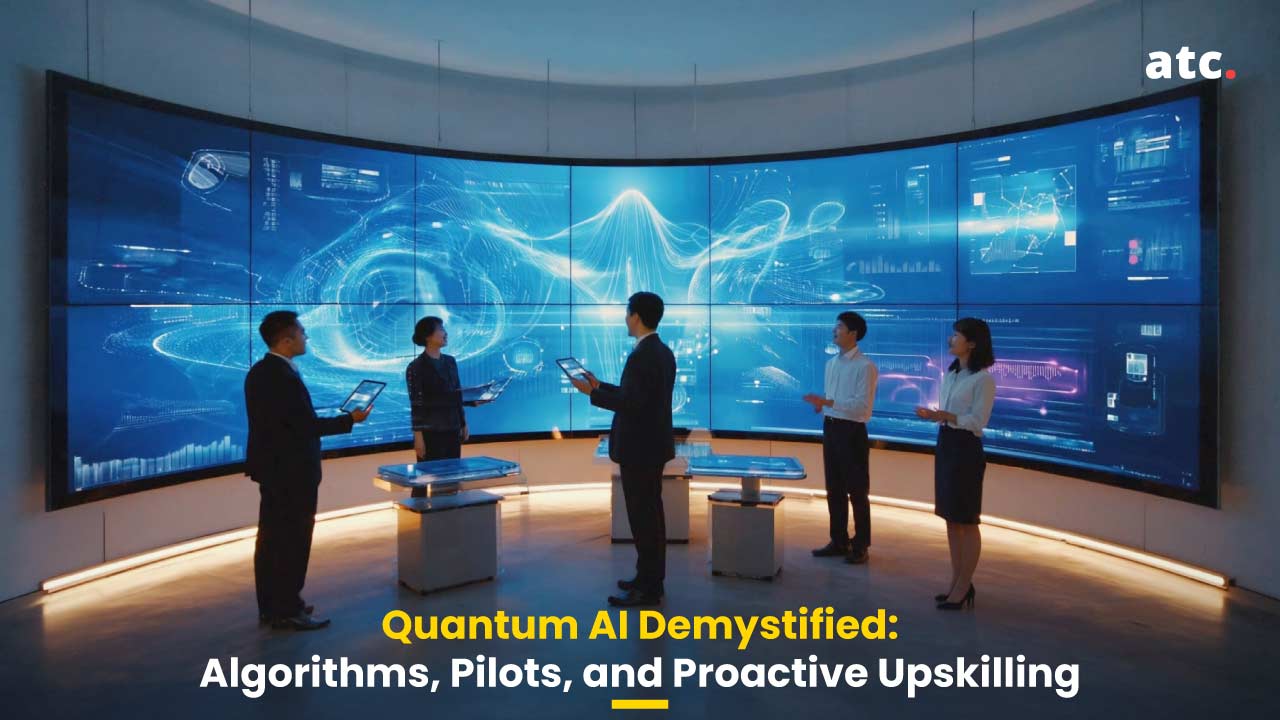Subscribe to the blog
To compete in today’s market, project team members, future leaders, and potential employees must be ready, willing, and able to keep up with the ever-changing needs of organizations.
For many organizations, that means relying on agile—a Scaled Agile Framework (SAFe) credential. SAFe is a set of organization and workflow patterns that are intended to guide the organization in becoming and scaling lean agile enterprises. The SAFe framework promotes alignment, collaboration, and delivery across large numbers of agile teams.
For professionals working within these organizations and building careers in the agile business world, the SAFe credential validates your knowledge and understanding of how to support the successful transformation of organizations into lean-agile enterprises.
It’s a skill that will only continue to be relevant. According to a KPMG survey on agility, organizations continue to scale agile. The accounting and consulting giant found that 70% of respondents from businesses around the world focused on integrating business and IT agile transformations within the next three years using SAFe as the predominant framework.
The SAFe Credentials
There are several SAFe certifications available for you to demonstrate your knowledge and experience, but how do you know which one is right for you?
Let’s break each of them down and get a better understanding of who they were each created for and what they entail.
If you are new to SAFe, you’ll want to begin your journey with the SAFe Agilist (SA) certification:
SAFe Agilist (SA)
This is the certification you will want to begin with if you are new to SAFe. The two-day course you must take to obtain this credential reviews all the principles and practices related to the Scaled Agile Framework. It helps you understand what a lean-agile enterprise is, what is involved in a lean-agile transformation, and how to adopt a lean-agile mindset.
This certification ensures that the professional is prepared to establish a strategic plan that keeps you leading the competition, understand and execute agile quality management methods, optimize commodity and portfolio performance approaches, and engage stakeholders and end-users in the process.
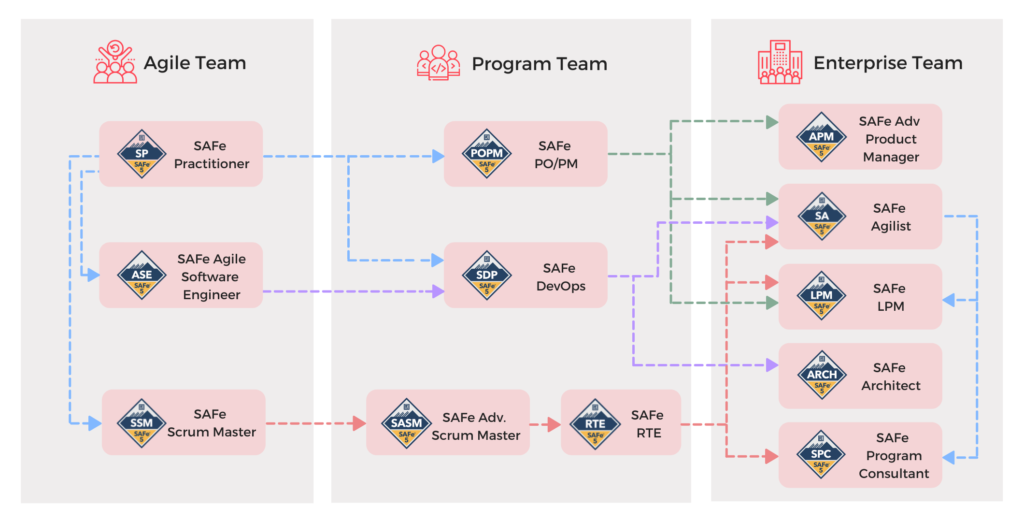
Roles with this credential include the following:
• Portfolio, program, or project manager
- Scrum Master
- Team lead
- Release train engineer
- Chief information officer
- Agile coach
- Consultant
- Product manager
- Product owner
- Program manager
- Solutions or systems architect
- Change agent
From these, there are several SAFe credentials you can obtain based on your professional role and expertise:
SAFe Advanced Scrum Master (SASM)
This credential is great for experienced Scrum Masters looking to take on more responsibilities or step up the career ladder. A SASM is responsible for improving team results through the facilitation of cross-team interactions and constant improvement. These professionals must be able to identify and solve team anti-patterns, improve value flow using Kanban and engineering practices, support program-level execution, and drive improvement.
The SASM credential ensures that the holder can establish Agile strategies for quality development and expand gradual rates of growth for partners and end-users.
Roles with this credential include the following:
- Program or project manager
- Scrum Master
- Release train engineer
- Business analyst
- Agile coach
- Consultant
- Product manager
- Product owner
- Program manager
SAFe Agile Software Engineer (ASE)
ASE professionals apply test-first principles to create alignment between tests and requirements, communicate with agile modeling, create a shared understanding with behavior-driven development, build applications with code and design quality, and apply lean-agile principles to optimize the flow of value. These individuals can design from context, collaborate on intentional architecture and emergent design, and create an agile software engineering plan, among other things.
Roles with this credential include the following:
- Scrum master
- Agile coach
- Consultant
- Software developer
- Software engineer
- Senior manager
SAFe Architect
A SAFe Architect delivers agile architecture to enable the creation of business value. The key areas of competency are as follows:
- Applying SAFe principles to develop and maintain Agile Architecture and release on demand;
- Leading and supporting solution trains and Agile release trains (ARTs);
- Extending the principles to drive continuous flow to large Systems of Systems (SoS);
- Enabling the improved flow of value.
The following are the roles with this credential:
- Scrum Master
- Agile coach
- Consultant
- Architect
- Agile trainer
- Solution architect
- System architect
SAFe DevOps Practitioner (SDP)
The SDP professional is typically responsible for improving the complete flow of value through a continuous delivery pipeline, right from the idea to the operational solution. Participants in this course and certification learn to apply the principles of DevOps within the lean-agile enterprise. After this course, participants will have a better understanding of how to set up a continuous delivery pipeline and align with the principles of continuous integration and quality delivery. It will also review ways to reduce time to market and increase the value of what you are delivering.
Roles with this credential include the following:
- Scrum Master
- Team lead
- Release train engineer
- Business analyst
- Agile coach
- SAFe Program Consultant
- Consultant
- Architect
- Engineer
- Developer
- Director
- Quality manager
SAFe Government Practitioner (SGP)
If you are a government official, leader, or influencer guiding the adoption of SAFe within public sector agencies, this certification might be right for you. The SGP credential holders have the ability to use SAFe principles and practices executing and releasing value through ARTs in order to lead a lean-agile transformation of a program under a government agency. The course will teach skills required to plan and execute the program increments, set up ARTs, and create performing Agile teams within a highly bureaucratic public entity.
Roles with this credential include the following:
- Business analyst
- Agile coach
- Consultant
- SAFe Program Consultant
- Practice lead
SAFe Lean Portfolio Manager (LPM)
LPM credential holders understand how strategy and investment funding is established, how to apply Agile portfolio operations and lean governance and build a plan to implement lean portfolio management functions.
Roles with this credential include the following:
- Portfolio, program, or project manager
- Release train engineer
- Business owner
- Solution manager
- Agile coach
- SAFe Program Consultant
- Consultant
- Product manager
- Program manager
- Chief technology officer (CTO)
- Enterprise architect
SAFe Program Consultant (SPC)
SPC credential holders lead all levels of an organization through a lean-agile transformation at scale by training, coaching, facilitating, and mentoring. This servant-leader plays a critical role by applying expert SAFe knowledge.
The roles include the following:
- Program or project manager
- Scrum Master
- Release train engineer
- Business analyst
- Agile coach
- Development manager
- Professional services consultant
- Consultant
- Director
- Manager
- Product owner
- Product manager
- Agile change agent
- Software engineer
SAFe Product Owner/Product Manager
A SAFe Product Owner/Product Manager is a SAFe professional who works with customers and development organizations to identify and prioritize requirements. They have the ability to apply a lean-agile mindset and SAFe principles and practices, identify customer needs, prioritize work to deliver value to the enterprise, and write capabilities, features, and stories.
The SAFe Product Owner/Product Manager credential focuses on ensuring that the credential holder knows how to build the product vision, refine the product backlog, and help the organization achieve agility quickly.
The roles include the following under this credential:
- Program or project manager
- Scrum Master
- Release train engineer
- Business analyst
- Agile coach
- SAFe Program Consultant
- Development manager
- CTO
- Consultant
- Architect
- Engineer
- Director
- Product manager
- Product owner
- Delivery manager
- Solution train engineer
- Software developer
SAFe Scrum Master (SSM)
A certified SS is typically responsible for integrating Scrum practices into an organization. They can use Scrum and Kanban to facilitate team events, support program execution, and coach Agile teams. This credential ensures that the learner knows how to mentor and coach teams, support and drive necessary change, and promote scrum activities, including iteration schedules.
The roles under this credential are as follows:
- Program or project manager
- Scrum Master
- Team lead
- Release train engineer
- Business analyst
- Agile coach
- Portfolio manager
- Consultant
- Architect
- Engineer
- Developer
- Director
- Quality manager
- Product manager
- Product owner
- Delivery manager
SAFe Practitioner (SP)
These individuals are responsible for using Scrum, Kanban, and extreme programming (XP) in a SAFe environment.
The roles under this credential include the following:
- Program or project manager
- Scrum Master
- Team lead
- Release train engineer
- Business analyst
- Agile coach
- Consultant
- Architect
- Engineer
- Developer
- Director
- Quality manager
- Product manager
- Product owner
- Change agent
- Operations
- Programmer
SAFe Product Manager/Product Owner
A certified SAFe® Product Owner/Product Manager works with customers and development organizations to identify and prioritize requirements.
The roles under this credential include the following:
- Program or project manager
- Scrum Master
- Release train engineer
- Business analyst
- Agile coach
- SAFe Program Consultant
- Develop Manager
- CTO
- Consultant
- Architect
- Engineer
- Director
- Product manager
- Product owner
- Solution train engineer
- Software developer
SAFe Release Train Engineer (RTE)
This Scaled Agile Framework course starts with lessons on Agile software development and then goes on to Agile software development and SAFe practices.
If you have an RTE credential, it shows you can drive end-to-end delivery of value in a single program or value stream in a lean-agile enterprise. During this Scaled Agile Framework course, you will learn how to plan and execute a program increment and how to work with value streams within your organization. Skills needed to coach ARTs and foster continuous improvement within a lean-agile organization will also be imparted under the course.
The following are the roles included under this credential:
- Program or project manager
- Agile coach
- SAFe Program Consultant
- IT manager
- Consultant
- Director
- Product manager
- Product owner
- Solution train engineer
- SAFe Scrum Master (SSM)
These credential holders are responsible for integrating Scrum practices into an organization. The credential testifies to their ability to use Scrum and Kanban to facilitate team events, support program execution, and coach Agile teams.
The roles under this credential include the following:
- Portfolio, program, or project manager
- Scrum Master
- Team lead
- Release train engineer
- Business analyst
- Agile coach
- Consultant
- Architect
- Engineer
- Developer
- Director
- Quality manager
- Product manager
- Product owner
- Delivery manager
Obtaining and Maintaining Your SAFe Credential
Once you decide on the SAFe credential that is right for you, you will need to complete a Scaled Agile Framework course related to your credential course and pass the exam. One of the major benefits of these SAFe courses is that they focus on breaking tasks down in a way that makes them easier to handle.
After you pass the exam the first time, you will then need to plan to renew your credential once a year by paying a fee. However, you will not need to take the exam again.
SAFe Certifications for Teams
If you are an Agile team looking for ways to improve your skills around ARTs, the SAFe for Teams (SP) course and certification is right for you. The course and credentials are intended to help team members build the skills needed to become better at performing ARTs. It reviews how to plan and execute an iteration, and what each team member’s role is in executing a program increment.
How SAFe Credentials Benefit the Organization
The first benefit of getting Scaled Agile Framework certifications is the skills they bring to the organization, improving the overall performance in several ways:
- Quality: SAFe has built-in quality practices, ensuring fast flow across all levels and teams.
- Productivity: When using SAFe, teams are aligned with the product; the continuous collaboration gives them high-level transparency, they clearly understand the deliverables, and in turn set expectations of the stakeholder. The result is a 35% to 75% faster time to market and a 20% to 50% increase in productivity.
- Team-centric environment: SAFe relies on a team-centric environment that develops via open communication and transparency. This helps ensure that the team has a clear vision of what they want to accomplish and that they are happier and more motivated.
- Quality: Organizations that rely on SAFe see better quality across the board, with companies reporting a 25% to 75% reduction in defects.
- Complexity: SAFe certification helps to resolve project complexities. The SAFe methodology is used generally for large and complex projects. Scaled Agile Framework makes it possible for multiple Scrum teams to work together on a complex product. The SAFe methodology is a transparent, simple, and straightforward one that works on a set of principles and helps build a larger solution. So, to benefit from this methodology and apply it in your projects, you need to have a thorough knowledge of the same which can be achieved through certification.
How SAFe Credentials Benefit You
The increased adoption of Agile in organizations across the globe has opened up the job market—if you have the right skillset. Even so, applicants looking to launch their careers or move up the ladder must beat the competition. Having the right credential can ensure that you make it past the human resources screening process.
A SAFe credential validates your knowledge and understanding about how to support the successful transformation of organizations into a lean-agile enterprise. Being SAFely certified will instill your coworkers’, clients’, and your teams’ trust in your expertise, valuing your guidance.
A secondary benefit is that as a SAFe credential holder, you will receive membership to the SAFe Community Platform and a wealth of resources, including SAFe Communities of Practice that provide networking opportunities with knowledgeable, experienced professionals, including SAFe Fellows and SAFe Program Consultant Trainers. These professionals can offer a unique perspective on some of the most challenging implementation obstacles.
Finally, from a practical standpoint, SAFe credential holders receive a digital badge that can be easily shared and displayed via email signatures, digital resumes, and social networks to gain even greater visibility.
Is SAFe Worth It?
There are more than 300,000 job-related credentials in the world. SAFe certification is well recognized and sometimes even required by some of the largest organizations in the world. According to Scaled Agile Academy, 70% of US Fortune 100 companies use SAFe. What’s more is that some of the global companies that are scaling Agile across the organization and relying on SAFe to make it possible include Cisco, Lego, PlayStation, FitBit, Royal Philips, FedEx, Chevron, Nordea, American Express, Nokia, Cerno, MetLife, Deutsche Bahn, Telia Finland, Air France, Capital One, Intel, and AstraZeneca.
At the same time, selecting the right one for your career goals can help you receive a hike in salary. According to estimates, professionals who hold SAFe Agilist Certification, for example, are paid about 25% more than those who are not certified.
Taking advantage of these benefits of SAFe—including the pay hike—will ultimately come down to selecting the right credentials for you which can boost your career.
